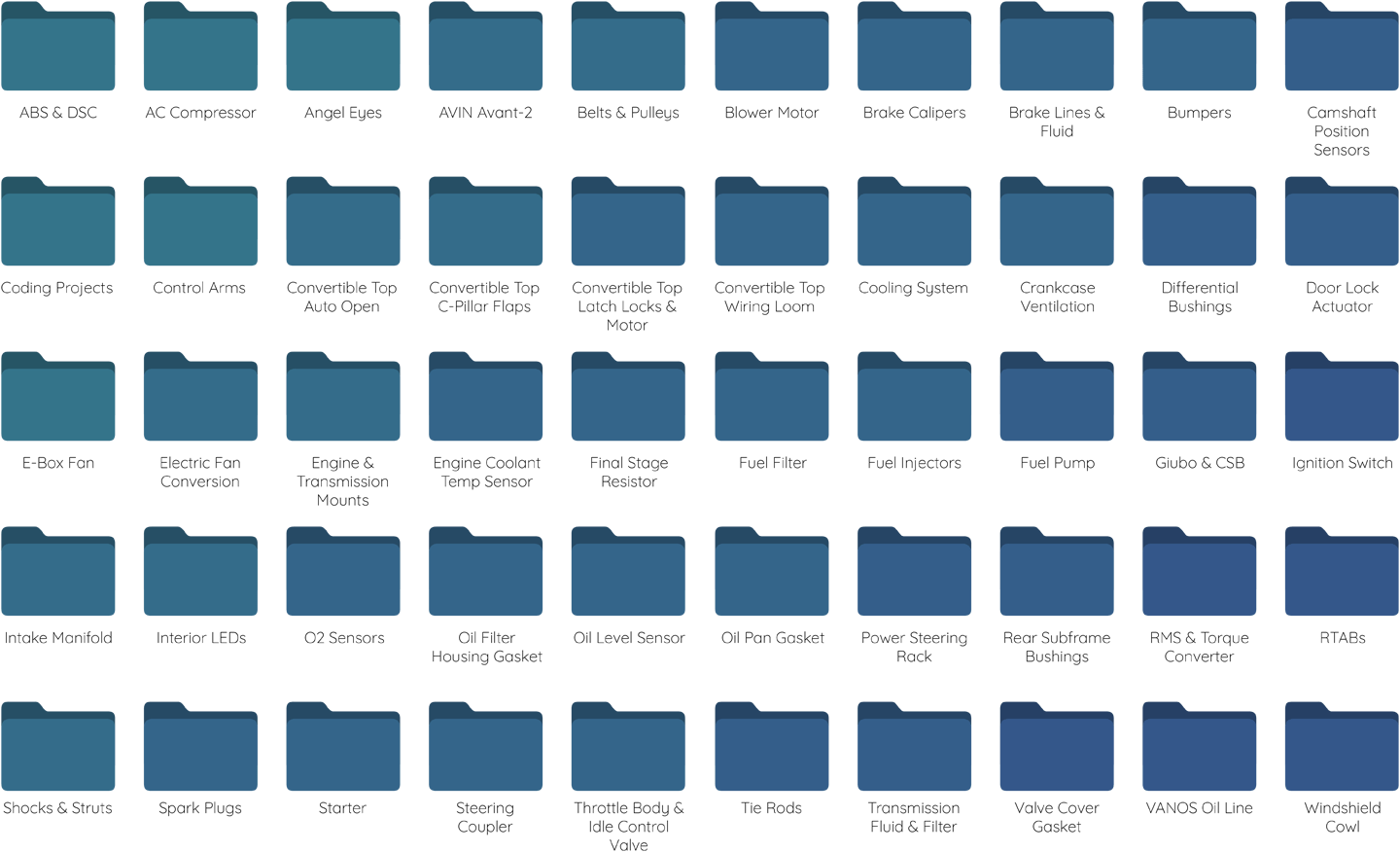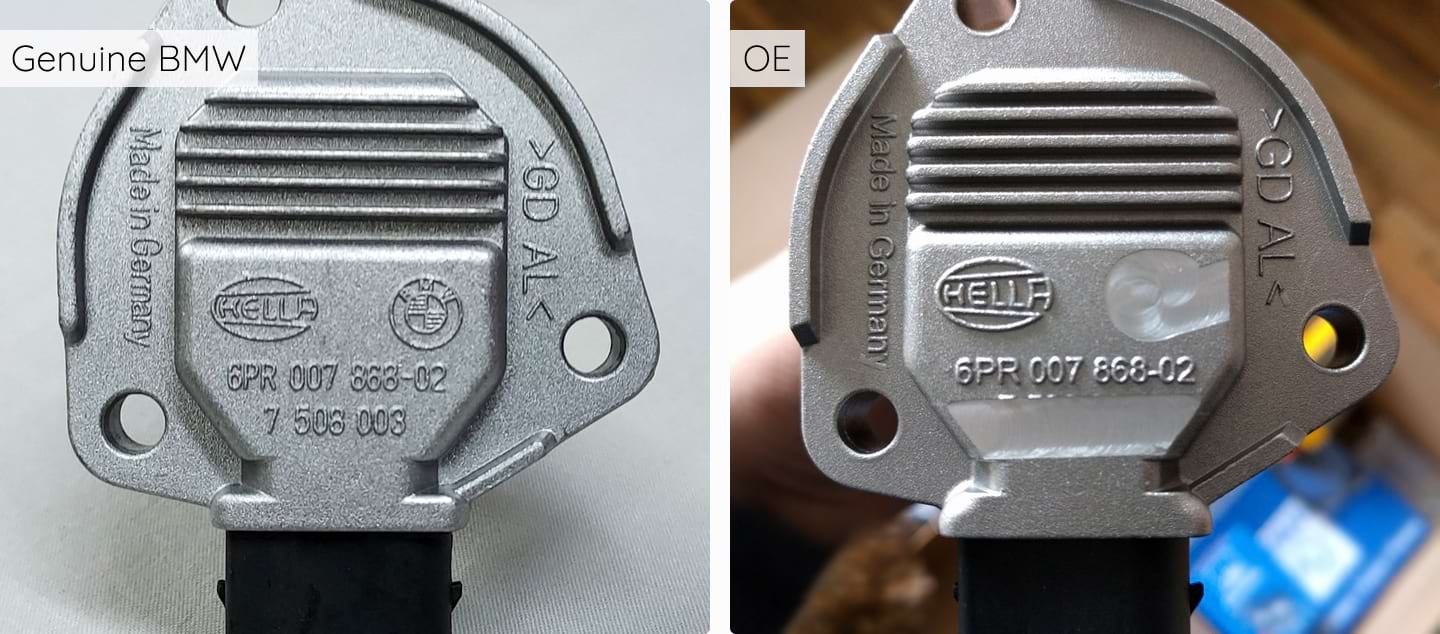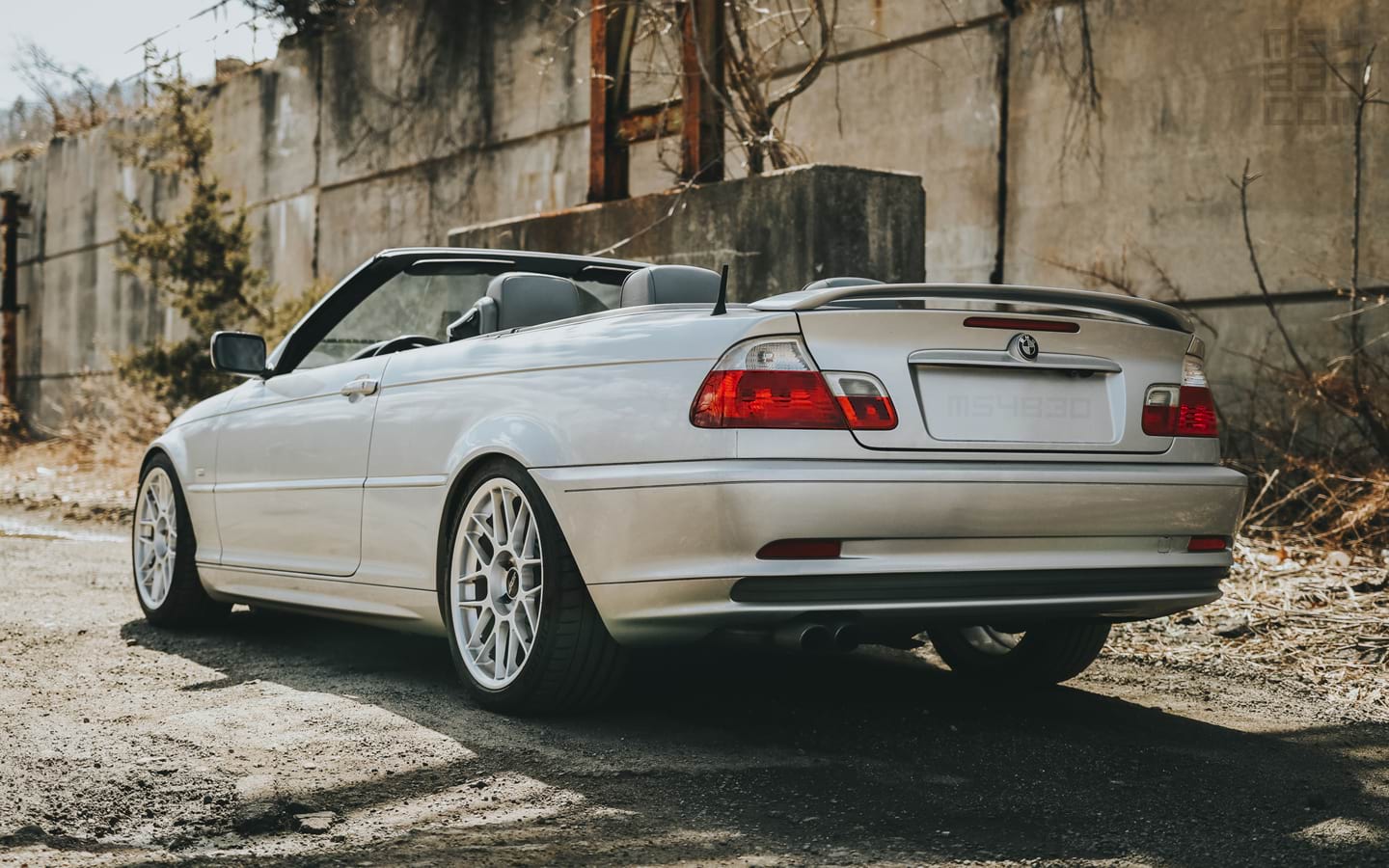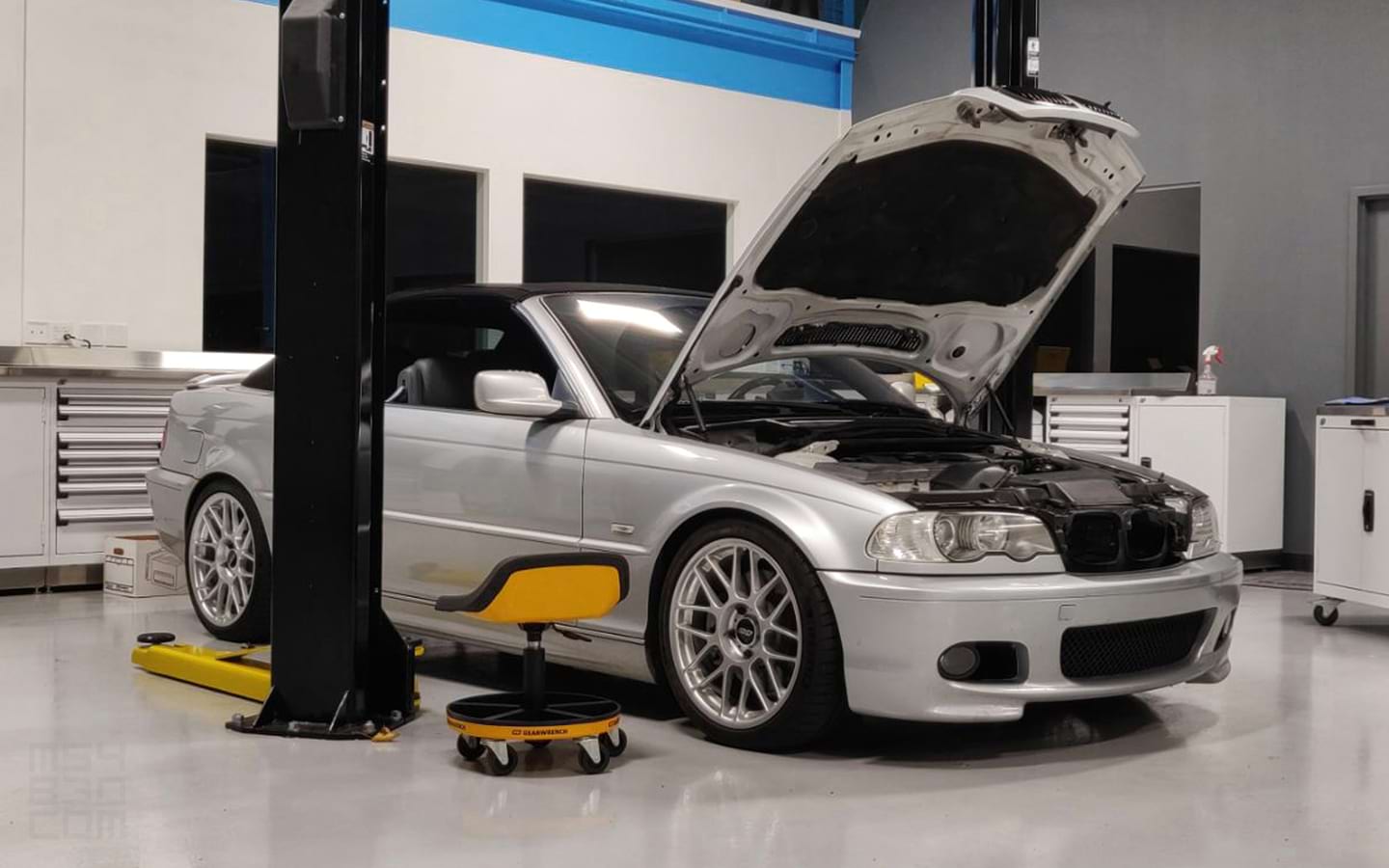There’s a tremendous amount of information available online around the E46 chassis, so much so that it can seem overwhelming. These cars have been on the road now for decades, and the collective knowledge in online communities goes back just as far. Your DIY journey will differ depending on your vehicle’s mileage and maintenance history, your budget and driving expectations, how long you plan on keeping the car, and what you’re looking to get out of it. The resources below helped me start out in the right direction, and I hope they can serve you as well.
Online DIY Guides
Members of forums like Bimmerfest, Bimmerforums, E46Fanatics, M3Forums, and ZHPMafia helped me through countless repairs and inspired confidence in future ones. This car would not be on the road today if it weren’t for those online communities. There’s a wealth of knowledge gathered in those discussion threads, and while there’s likely newer ones that have emerged over the years, below are just a few of the guides that served as good launching off points and were most influential when I first started.
Popular Forum Threads
- Bimmerfest E46 Wiki
- A Buyers Guide for the E46
- Bare Essentials Maintenance Checklist
- Cold Weather Misfires & CEL
- Cooling System Overhaul
- Suspension Overhaul & Refresh Guides
- M54 Engine Disassembly
- ZF 5HP19 Transmission Disassembly
- Common Convertible Issues
Be sure to read the pinned or stickied threads in forums—they’re there for a reason and will serve as good wayfinders. Diving in deeper, don’t worry about not knowing technical terms as you start your search. You’ll quickly find that many people have shared the same challenges, posted the same questions, and received detailed answers and valuable resources in response. The photos below are a fraction of what you can expect from community contributions.

Thinking long term, it’s good practice to save resources you think you’ll need or know you’ll come back to. I’ve seen well-established websites disappear overnight or lose critical information due to a failed platform migration, merger, legal issue, or key person dependency. Content available today may not be around tomorrow or 10 years from now—many resources from 10 years ago are no longer around today! Having an offline repository will ensure those resources are still available when you need them most, especially if you decide to tackle the same repair again in the future.
My own archive has grown over the years as I took the time to compile and archive some of the more useful resources for future reference. Going on two decades, I’ve amassed a robust library of owner and repair manuals, DIY guides, photos, videos, assembly diagrams, wiring schematics, parts databases, program install files, and more.
Your own filing system may look similar as the years progress.

Part Numbers & Diagrams
Figuring out the step-by-step instructions to troubleshoot an issue or replace a component is just one part of the equation. There’s also the question of exactly which component it is that you actually need. With different years, makes, and models and millions of fitment combinations, having a specific part number will ensure you’re buying the correct part. Below are a few sites that can be used for looking up part numbers and diagrams.
Popular Diagram Sites
RealOEM is my go-to resource for researching part numbers, diagrams, and fitments. It’s comprehensive, well-organized, and allows multiple search paths, including by VIN. You can navigate by category when you know the name of a component, browse by diagram when you know where the part is but not what it’s called, or search by part number when you know a part fits and want to see related information.

Note: The screenshots above will differ slightly from the original RealOEM website. Having seen too many sites disappear without notice, I keep an offline copy of RealOEM’s parts database to maintain access to critical information. I’ve also modified it to include torque specs, bolt sizes, repair photos, and updated part numbers from retrofits and modifications. Even without these additions, the original RealOEM site is still immensely helpful.
Brands & Quality Parts
Having tracked down your part number, you’ll need to identify a good manufacturer. Different companies make parts of different qualities. A component from a high-quality manufacturer could last over 70,000 miles, while the same part from a low-quality manufacturer could last less than 1,000 miles.
Genuine BMW parts came on my vehicle from the factory, but BMW doesn’t actually produce all the parts themselves. If you’re savvy enough, you can buy parts from the same companies that supply them for BMW. These are considered Original Equipment (OE) parts and come without the BMW logo (and without the markup in price).
Parts made by an Original Equipment Manufacturer (OEM) will be of high quality, as well. An OEM component may not be the brand used for the original part, but it will be from a manufacturer that supplies other parts that were original to the vehicle. For example, Bosch is OE for oxygen sensors while NGK is OE for spark plugs. Bosch spark plugs, in this example, would be considered OEM.
It’s worth doing additional research before you buy. Here are a dozen quality brands for common components to get you started.
Popular Brands
- Continental/ContiTech for drive belts
- INA/SKF for pulleys and tensioners
- Wahler for the thermostat
- Saleri for the water pump
- Modine/CoolXpert for the expansion tank
- Siemens/VDO for the fuel pump
- Mann, Mahle, or Kayser for the fuel filter
- Mann for air filters and the oil filter
- Hella for the oil level sensor
- Lemförder for bushings and control arms
- Bosch for oxygen sensors
- NGK for spark plugs
When sold through official BMW channels, all of these parts will also have the BMW emblem on them. A good example to illustrate the difference between OE and Genuine is with the oil level sensor. For years, the oil level sensor made by Hella (OE) retailed for $50. The same Hella oil level sensor sold as Genuine BMW retailed for over $200.

I’ve stood in facilities and watched first hand as workers on assembly lines ground Genuine BMW logos off of components and repackaged them under another brand in order to avoid licensing issues. Finding the OE brand or a company that repackages OE components will ensure you’re getting the best quality part for the best possible price.
Online Vendors
You’ve read how to do the repair, found the correct part numbers, and know who makes the best components. The next step is to identify a good company to source the parts from. Some vendors specialize in certain vehicle makes, others focus on aftermarket and custom parts, while still others focus on speed of shipping, competitive pricing, breadth of catalog, or customer support. Depending on what you value, there’s a company out there that will fit your needs.
From my own experience, I prioritize customer reviews, product warranties, and quality of service, because something will inevitably go wrong if you order enough parts over a long enough period of time. You want to do business with a company that will treat you as well as you treat your car. Below are popular vendors that get discussed frequently in online communities.
Popular Vendors
- AutohausAZ
- Bimmerworld
- BMA Auto Parts
- ECS Tuning
- eEuroparts
- FCP Euro
- Pelican Parts
- RM European
- RockAuto
- Turner Motorsport
If you’re considering shopping on Amazon or eBay, make sure the parts you’re buying come from a legitimate seller and a quality brand. While marketplaces can be a Wild West experience, they can still be useful if you’re smart about where you buy from. Buying direct from reputable parts vendors, however, will provide the added security of warranty, shipping, and customer service.
Good suppliers can still offer poor quality brands, and it’s worth staying away from brands like URO, MTC, and Hamburg-Technic, whose quality is notoriously as cheap as their price. Read reviews and learn from others!
As you delve into more and more complicated repairs, you’ll find targeted sites offering specialty solutions. For instance, Beisan Systems is known for their VANOS repair kits, German Auto Solutions for their DISA repair kits, and BMWGM5 for their GM5 module repair service. You’ll discover further options as you continue working on your vehicle.
Launching Off
One of the common stereotypes about older European vehicles is that they’re expensive to own and difficult to maintain. Over the last 20 years of first-hand experience, I’ve discovered how rewarding the process is and how easy repairs can be with the right mindset, maintenance systems, and resources. Invest the time to read, watch, listen, and learn. A little curiosity goes a long way.
I owe a great deal to this E46 and where it’s taken me in life. I can trace over a decade’s worth of events back to a single, pivotal decision—the decision to DIY. This site is meant to be a small token of appreciation for the car and the community around it that has enabled so much. Here’s to many more miles and memories!
Have additional questions or want to get in touch? Be sure to check out the FAQ page.

